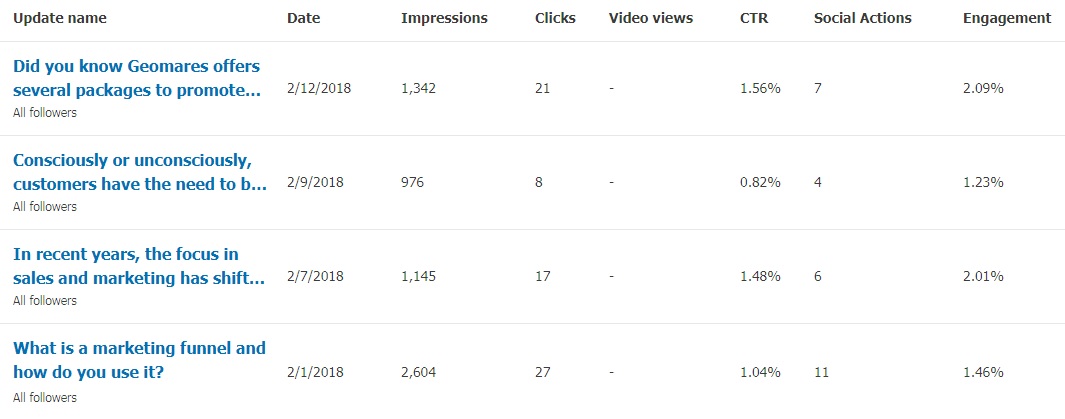Your own social media channels are a fantastic way of promoting yourself, making and maintaining contact with customers or prospects and increasing your brand awareness. But have you also thought about using the social media channels of other companies too? A social media channel like GIM International’s is an easy way to reach a larger target group in order to attract – and retain – new fans and followers.

Why is it so effective?
One of the biggest advantages of this approach is the fact that you can carefully select which companies to work with based on their target groups, i.e. the fans or followers of their social media pages. Most social media channels give administrators access to rather extensive analytics, making it easier to see the precise makeup of the target group. With this information you can determine whether the channel is relevant enough, or whether you have to look for another solution that better meets your needs.

The details from LinkedIn above show us the job functions of the visitors to our Geomares page. As you can see, a large percentage of them work in a marketing-related environment. We will continue to use LinkedIn as an example here, but other social media platforms also offer great insights into both your target group and the metrics for your posts. You can – and should – use these insights to monitor how various posts perform.

As can be seen in the above example, there can be enormous variation between posts in terms of impressions, clicks and engagement. This information should be used to place more relevant posts in the long term and to achieve a higher level of engagement. If you are working with a communication partner, you should study this information together to decide how your message should look in order to achieve the maximum benefit for both of you.
Lastly, social media marketing is cheaper than an e-blast, and it also takes less time and effort to produce the material – although you may have to lower your expectations somewhat. A social media post is a less direct way of approaching your target group than an e-mail, for example, and it also offers fewer possibilities in terms of information and placing links.
How does it work?
As a rule, at Geomares we see social media as part of our advanced targeted marketing solutions. We work together with you to identify your goals and subsequently decide which target groups are most relevant and which message would fit well. Then, we guide you through the final steps to shape your campaign, which means selecting the right communication channel. Besides social media, this can also be an e-blast or search engine advertising. Naturally, your budget also plays a role here.
Alternatively, you can choose to try out a simple social media post. For this, we offer special social media share packages to give you the opportunity to share your message with our carefully built-up group of followers and fans on social media. For more information about this, please contact our marketing advisors.
What does it look like?
Sponsored social media posts actually look similar to other posts, and that is where the strength of these campaigns lies. Our followers are used to a certain level of quality from us, and we want to continue to guarantee that. Some examples:
 |
 |
Would you like to know more about our social media share packages or advanced targeted marketing, or are you looking for advice on your B2B social media strategy? Discuss it with our marketing advisors or read our blog with ten tips for an optimal B2B social media strategy.